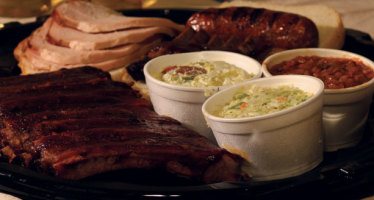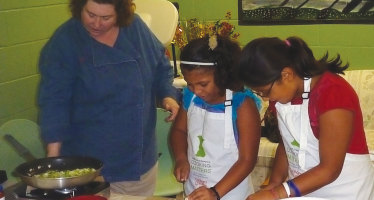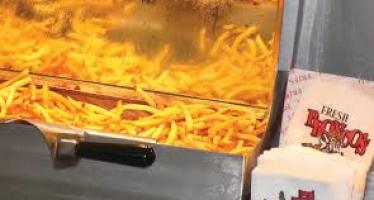Popcorn: The American Snack Food

I grew up in the 80’s. My sister had hair that would hit the doorframe if she didn’t duck, my brother bought me a Loverboy cassette tape for my 12th birthday, and all photos of me from this era include OP shorts and striped tube socks pulled up to my knees. Wow. The 80’s were really bad. Not just for fashion and music, but bad for food.
I remember loading up in the family truckster that we bought from the Griswolds after their return from Wally World, and barrel-ling down to the local cinema center to watch movies all day. In lieu of paying for all of us to have concessions, my mother would make popcorn all morning and then somehow magically sneak it in the theater (I think she would feign pregnancy like the guy in the new Taco Bell commercial). The terrible thing about this was not the blatant rule-breaking. It was not the ridiculous movies we saw, either. It was the air-popped popcorn. There have been many tragedies in the world of food over the years—processed cheese spread, margarine, decaffinating coffee, etc.—but the loss of the in-home, stove-popped popcorn tradition as evidenced by the proliferation of the air poppers is perhaps the most painful. The history is a little muddy, but it goes something like this:
All historical seriousness aside, popcorn is wonderful no matter where you get it. Here at school, we sell hundreds of pounds per year through our cafeteria. Our dean rarely shows up to a meeting without a bagful. My dad used to get a bag frequently from the now-defunct filling station by his house. I remember with great nostalgia the huge bags of Vic’s that we used to take over to Uncle Duff’s house when we would visit. As a kid I was astonished at the huge handfuls of popcorn that he could eat—I am pretty sure that I have caught up now.
Popcorn is the quintessential American snack food. We love it. I was astonished to discover that we Americans eat almost seventy quarts per person per year! Popcorn has spent time as the darling of almost every health-conscious agency in the country, from the American Dietetic Association to the American Academy of Pediatrics. No one in the world disagrees that the aroma of just-popped corn is intoxicating. Popcorn enjoys a life free of religious taboo, suffers very little harassment from the snack food police, and is readily available the world over due to its size and shelf stability. A city council in Ohio even praised a bar that served free popcorn as doing their part to promote sobriety—kind of silly since the level of salt on popcorn is hardly a foil to beverage consumption, but whatever, it’s Ohio. No other food in the world is so unanimously received. During my preparation for this article, I asked at least twenty-five people for their opinions about popcorn, and each one of them said they liked it. Wow. Unanimous. I like to think that the popularity of popcorn is due in no small part to the legions of Boy Scouts that take to their neighborhood streets each year to sell pounds of it in a herculean fund-raising effort only outstripped by the moms of Girl Scouts who take their order forms to work. I am a little bitter, you see: I gave up on an opportunity for my first kiss one splendid afternoon in fourth grade in order to fulfill my duty to sell popcorn. Maybe I was just a bit nervous, but we’ll blame my loyalty to popcorn and the Boy Scouts.
Despite all this magnificent popularity, popcorn seems strangely absent from the menus of contemporary American restaurants. Sure, you can get it at any gas station, movie theater, grocery store or watering hole, but why not as an amuse-bouche at your favorite $300-a-plate dinner? Simple: popcorn is of the people, for the people and by the people. $300 a plate is for the crazy rich, or crazy foodies. They either look down on popcorn eaters, or know that popcorn is only worth a couple of bucks a pound and no way will they pay crazy money for it. All that said, it used to be on the menu at V. Mertz, and we played with it a bit at Sage a couple of years ago. My guess is the chef at Mertz at that time discovered what we at Sage discovered: we could only make it about as good as you could get it anywhere. Popcorn is so democratic, so available, so “of the people” that even the process used to make it is simple enough that the rarified chefs among us, the great Clayton Chapmans or Paul Kuliks, can’t do anything to it to make it elite or refined beyond the grasp of the hoi polloi.
Americans’ love for popcorn is rooted deeply in our sense of place, our love of sharing, and our propensity for over-consumption. It is from here—from America. We love stuff like that. We buy it in huge tubs at the movie theater and then divvy it up among the twelve of us. Or, when we get a bit bigger than we were in those halcyon days of the family truckster, we eat the whole tub ourselves and go back for the free refill. That’s something else we love: free and refill combined together.
If you have been away from the stove for a while, making some “old-fashioned” popcorn is a great way to get back to it. You don’t need to buy any special equipment. You probably need to buy a little popcorn that is not either already popped or prepared to be popped in the microwave. You’ll be pleasantly surprised by the cost and the lack of additional things in the package. The ingredient list will only say “popcorn.” Find yourself a 2-3 quart stock pot. I think that any lid will work, but one with a steam vent on the top will be best. If there is no steam vent, find one that doesn’t fit too snugly, or keep it off-kilter a bit during the popping. Allowing the steam to escape during cooking is essential to preventing chewy and dense popcorn. Before you turn on the heat, add 1-2 tablespoons of oil to the bottom of the pan, being sure that it coats the surface evenly. Then add 1½ cups of unpopped popcorn kernels. Be careful to not add more than will allow all of the kernels to be in contact with the bottom of the pan at once. Put on the loosey-goosey lid. Place the pan over medium-high heat. Shake constantly for 2-3 minutes or until popping slows to two seconds between pops. Remove into a large bowl and immediately toss with warm butter and desired seasoning. Enjoy either one kernel at a time—if you are under the age of four or a Buddhist monk—or in large handfuls—if you are me or the Uncle Duff that I remember.
Omaha Area Locations for Popcorn
Vic’s Corn Popper
All sorts of already popped popcorn, available in grocery stores city-wide.
Complete line available online, and at their three area locations.
Maggie’s Gourmet Popcorn
Broad variety of traditional and flavored popcorns available in grocery stores and online.
Office West Lounge
Free, heavily salted popcorn available nightly.
Rosenblatt Stadium
(While supplies last) Rosenblatt sells the American Classic Cracker Jack.
The new stadium in La Vista is rumored to be moving to the newer, yet equally silly-named, “Fiddle Faddle.”
Taste of Omaha
June 5-7, 2009. They usually have a kettle corn vendor of some type.
Omaha Henry Doorly Zoo
The smell alone is summertime in Omaha. Please do not feed to the fish, peacocks, etc.
Hilger AgriNatural
Local Organic Popcorn (unpopped) available year-round from the Nebraska Food Cooperative: www.nebraskafood.org.

Brian O'Malley
Brian O'Malley is a chef instructor at Metropolitan Community College's Institute for the Culinary Arts. A graduate from New England Culinary Institute and a member of the American Culinary Federation, O'Malley worked as the chef/owner of Spread. He was a manager/instructor at the New England Culinary Institute, head chef at Vanilia in Santorini, Greece, and BackNine Grille, assistant food and beverage manager at the Champion's Club and opening chef at BOJO. Brian O'Malley can usually be found in MCC's kitchens, teaching, creating works of culinary genius or debating the perils of out of season tomatoes.
Related Articles
Spring BBQ Review
Considering that the summer is nearly upon us and nothing speaks to the summer like the smell of pellets burning,
Cooking Matters Spotlight: Chef Rebecca Coatney
Share Our Strength’s Cooking Matters™ empowers families at risk of hunger with the skills, knowledge and confidence to make healthy
Omaha Standard: Bronco’s Fries
My wife sometimes calls me a food whore. She means it in the nicest possible way. I hope. I hope
No comments
Write a commentOnly registered users can comment.














